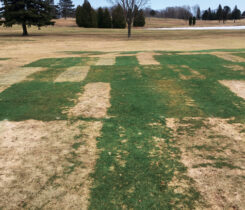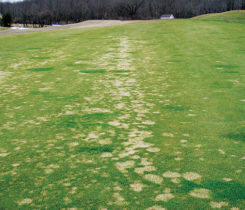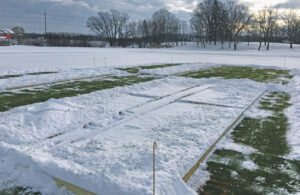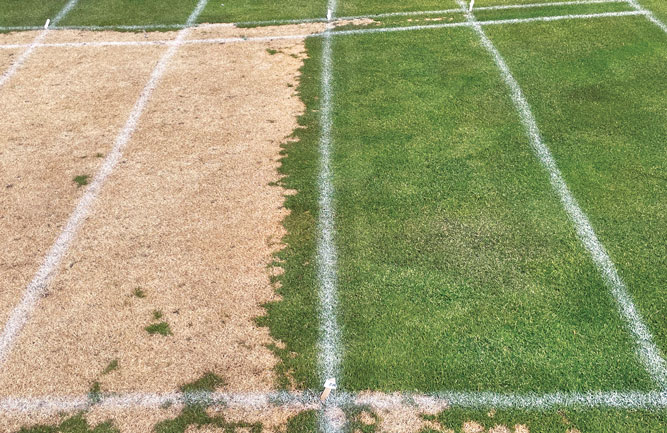Super Science: The bizarro snow mold year
Not a trace of snow mold in Wausau
Four hours to the north, in Wausau, the winter started out much the same as Chicago. Temperatures in December and January were 5.1 degrees F and 5.2 degrees F above average, respectively. December snowfall was 8.4 inches below normal, and January was 7.8 inches below normal.
Just like in Chicago, there was unhardened turf susceptible to fungal infection if a deep snow cover were to arrive, but the snow never came in Wausau and other parts of the northern Great Lakes. This lack of snow cover was critical once the February cold snap arrived in mid-February. These frigid conditions froze out the turf and the snow mold fungi along with it.
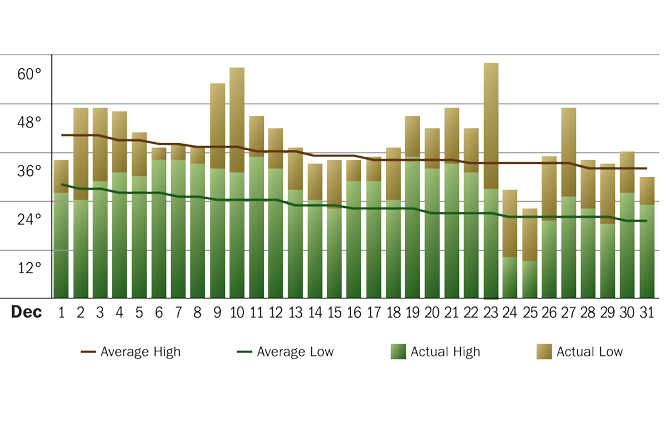
Chicago’s December 2020 temperatures were well above average, preventing turf hardening and making it more susceptible to snow mold. (Graph courtesy of Accuweather.com.)
One of our snow mold research sites is at Wausau Country Club, and in the winter of 2019-2020, the nontreated control plots averaged over 70 percent disease. In 2020-2021, there wasn’t a lick of snow mold on the plots.
In short, the winter in Wausau and much of the northern Great Lakes started out much the same as the southern Great Lakes, but the snow machine never kicked on in January and February, and, as a result, the February cold snap killed off most of the snow mold fungi and prevented snow mold from developing.
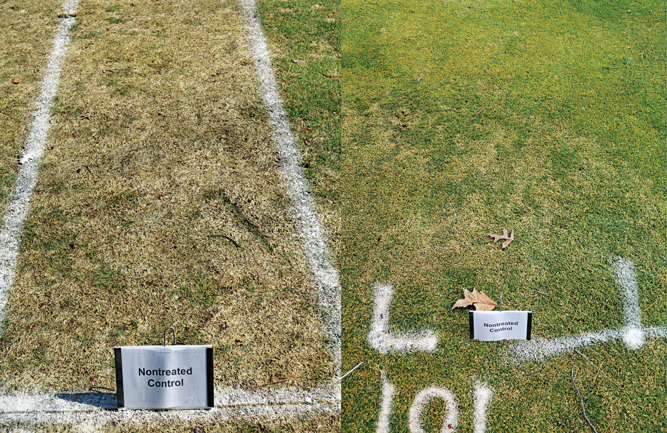
What a difference a year makes in Wausau, Wis. Nearly 100 percent disease on the nontreated control in 2020 (left) and nothing in 2021 (right). (Photo courtesy of Paul Koch, Ph.D.)









